The project is being implemented with the support of UNICEF Ukraine and with financial support from the Government of Norway.

Implemented by: Partner:

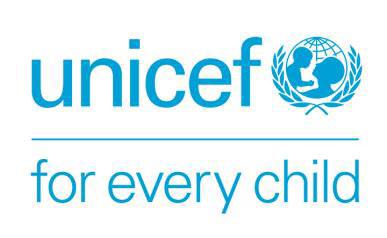


Dipartimento di neuroriabilitazione intensiva

The project is being implemented with the support of UNICEF Ukraine and with financial support from the Government of Norway.

Implemented by: Partner:




Dipartimento di neuroriabilitazione intensiva
Occupational Therapist
D.H. Unit‡ Subintensiva Pediatrica NEU


GMFCS - E & R (Expanded and Revised) © Robert Palisano, Peter Rosenbaum, Doreen Bartlett, Michael Livingston, 2007
CanChild Centre for Childhood Disability Research, McMaster
University

GMFCS © Robert Palisano, Peter Rosenbaum, Stephen Walter, Dianne Russell, Ellen Wood, Barbara Galuppi, 1997
CanChild Centre for Childhood Disability Research, McMaster University
(Reference: Dev Med Child Neurol 1997;39:214-223)
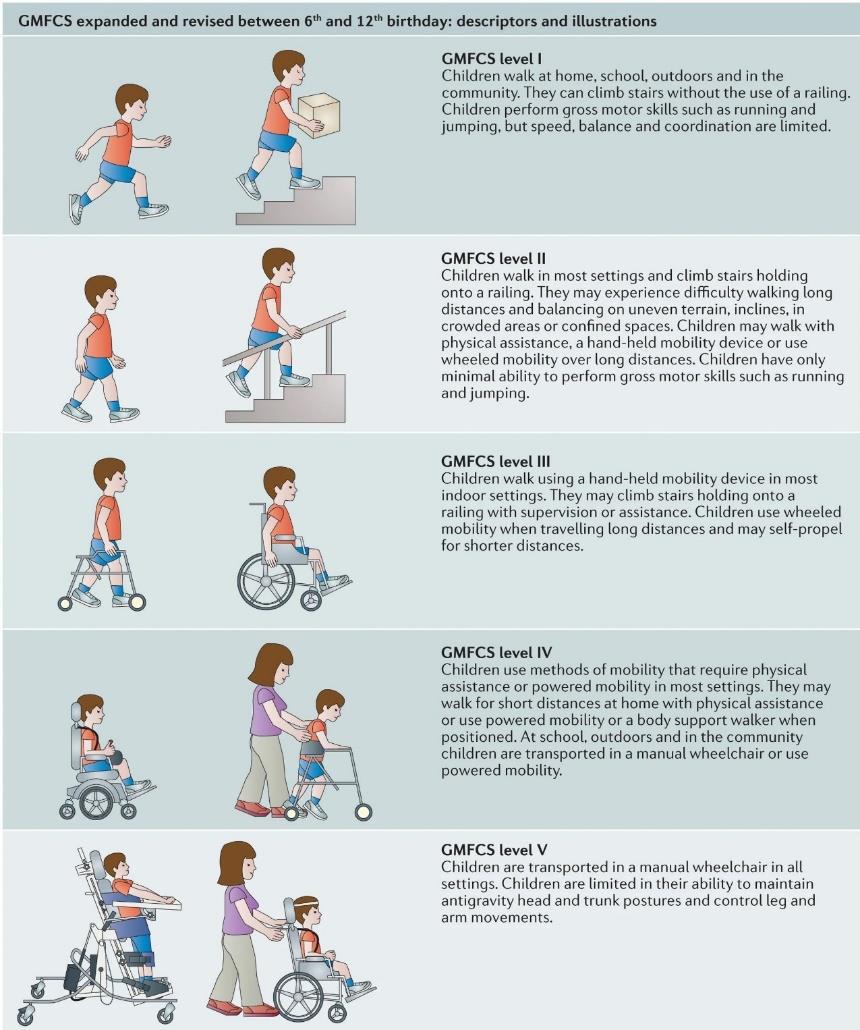
(Palisano et al.,1997)

The goal of the GMFCS is to identify which level best represents the current abilities and limitations in the gross motor functions of the child or young person.
The classification of motor function depends on age.
For the age groups between 6 and 12 years and between 12 and 18 years, the descriptions reflect the possible impact of environmental factors (e.g. distances to school and in the social context) and personal factors (e.g. energy demands and social preferences) on modes of movement.


• Level I: Walks, runs with some limitations in speed/balance.
• Level II: Walks with limitations, uses railing for stairs.
• Level III: Uses walker indoors, wheelchair outdoors.
• Level IV: Powered mobility or transported.
• Level V: Transported in wheelchair in all settings.




• Distinctions between Level I and II - Compared to children at Level I, children at Level II have limitations in walking long distances and maintaining balance; they may need a manual mobility device when learning to walk; they can use wheeled devices for mobility over long distances outdoors and in social contexts; they require the use of handrails to ascend and descend stairs and are not fully capable of running and jumping.
• Distinctions between Level II and III - Children at Level II are able to walk without a manual mobility device after the age of 4 (but may sometimes choose to use one). Children at Level III require a manual mobility device to walk indoors and a wheeled device for mobility outdoors and in social contexts.
• Distinctions between Level III and IV - Children and adolescents at Level III can sit independently or only need minimal external support to sit. They are more autonomous in postural transitions while standing and walk using a manual mobility device. Children and adolescents at Level IV mostly remain seated (generally with support), but their independent movement is limited. Children and adolescents at Level IV are likely to be transported in a manual wheelchair or use an electric wheelchair.
• Distinctions between Level IV and V - Children and adolescents at Level V have significant limitations in head and trunk control and require various technologies for assistance and physical support. Independent movement is only achieved if the child/adolescent can learn to use an electric wheelchair.

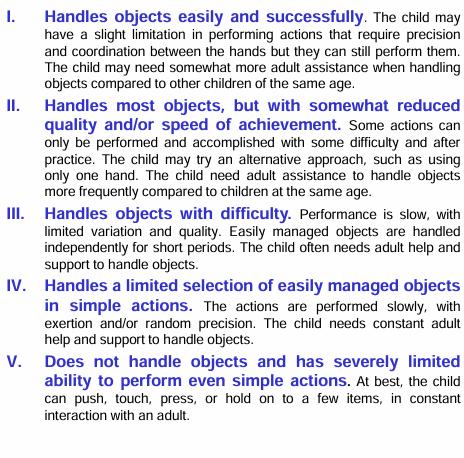


Level I children have slightly more difficulty with fine motor skills than children without disabilities. Level II children handle the same objects as Level I, but perform tasks less effectively and need more guidance. Level II children can handle most objects, but with less quality and more guidance needed.
Level III children can use easily handled objects, but need help positioning them.
Level IV children can only perform simple actions like grasping and releasing with constant help. Level V children can perform only simple movements in special situations.








Level I children have limited fine motor control and may struggle with new/unfamiliar tasks.
Level II children perform similarly to Level I but with decreased quality or slower speed, and often simplify object handling.
Level III children need help preparing activities and environmental adjustments due to limited reach/handling.
Level IV children can only perform parts of activities with supervision, while Level V children can only participate in special situations.

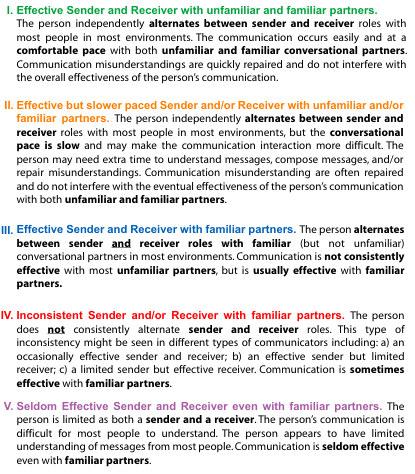



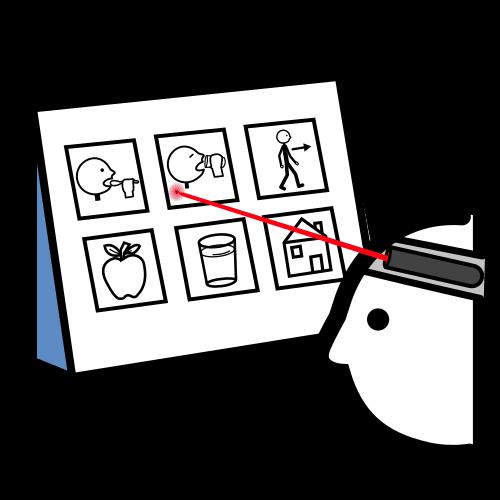


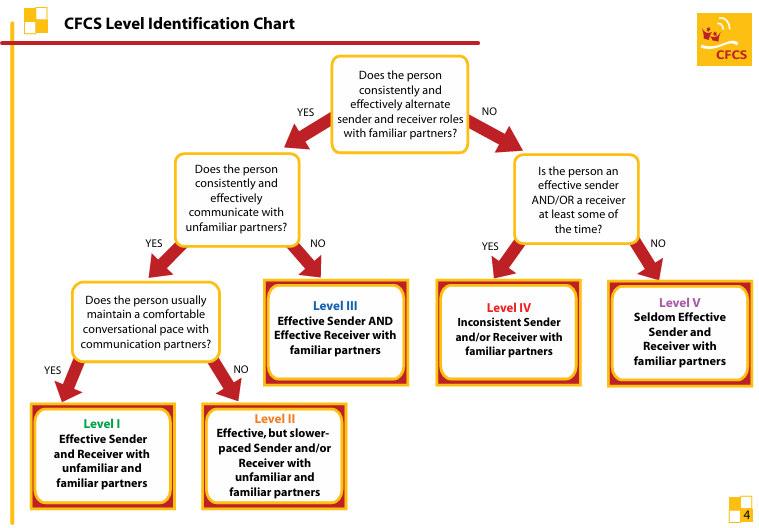
The validation of the VFCS has been done with children between 1 and 19 years old
LEVEL I:

LEVEL II:
• Uses visual function easily and successfully in visionrelated activities.
LEVEL III
• Uses visual function successfully but needs selfinitiated compensatory strategies.
LEVEL IV:
• Uses visual function but needs some adaptations.
LEVEL V:
• : Uses visual function in very adapted environments but performs just part of vision-related activities.
• Does not use visual function even in very adapted environments.










